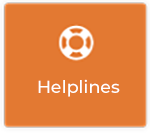Lesson 3- George’s Story
- +Core Concept
- Core concept:
This lesson gives students an opportunity
to further explore how technology is used
to manipulate young people in incidents
of online sexual coercion and extortion
and will encourage students to develop
responses to protect themselves online. - +Learning Outcomes
- Learning Outcomes: Students will be able to identify how online sexual
coercion and extortion occurs from a technological
perspective and how young people can respond safely
and effectively. - +Curriculum Links
Junior Cycle SPHE Framework: Relationships
and Sexuality Education; Personal SafetySPHE Short Course: Strand 3: Team Up – The
Relationship Spectrum; Sexuality, Gender
Identity and Sexual Health- +Resources Needed
Resources: George’s Story video, George’s Story handout (both
available at www.webwise.ie/beinctrl), worksheets
3.1 and 3.2, traffic light cards (optional)- +Embedding Digital Technologies
 Embedding Digital Technologies:
Embedding Digital Technologies:
Schools with access to digital devices (e.g. tablets,
laptops, phones) can capture student responses on
relevant worksheets using a variety of web-based
tools (e.g. Padlet, Mentimeter, etc).
Some opportunities for this are highlighted
by the logo.- +Methodologies
Methodologies: Video analysis, reading comprehension, group work,
discussion, reflection/application, traffic light evaluation (optional).- +Students with SEN
Differentiating this lesson for students
with SEN:Differentiated worksheets (‘a’ versions) are provided to
assist students who may have slow processing or memory
difficulties in figuring out the main points. Students with
SEN may have difficulty reading aloud; avoid putting
pressure on individual students to read aloud.Some teenagers with SEN may lack social judgement and
find it difficult to comprehend right from wrong or the
criminality of the online sexual coercion and extortion of
children. This is particularly pertinent as these students
need to develop the skills to protect themselves. SESS
provide training in Social Stories www.sess.ie/course/
social-storiestm.- +Teachers Note
Teachers Note:
It is advisable to read the best-practice
guidelines before engaging in lesson delivery.
Before leading any of the activities included
in this resource, it is important that you have
established clear ground rules with the class
and that students see the SPHE class as an open
and caring environment. Take the time to outline
the supports available to students (both inside
and outside of school), should they be affected
by any of the issues discussed in the class and
need to talk to someone. Highlight the fact that
if there are any disclosures indicating abuse
or underage sexual activity, you are obliged to
report the incident to the Designated Liaison
Person (usually the Principal). Avoid discussing
cases familiar to the students, focus discussions
on the story of Anna and George presented in
the lessons.- +Activity 1
Explain to students that today’s lesson will explore how young
people can be manipulated by someone they have met online,
focusing on George’s story. The lesson will consider how
technology is used in incidents of online sexual coercion and
extortion and how to respond and communicate safely online.
After watching George’s Story and reading the handout
(www.webwise.ie/beinctrl), it may be useful to re-cap again
key definitions from lesson one – online communication,
online sexual exploitation, coercion and extortion. Distribute worksheet 3.1 or 3.1a – Warning Signs – and
Distribute worksheet 3.1 or 3.1a – Warning Signs – and
divide students into small groups.
This activity will allow students to identify how Rachel used
technology to make George think he could trust her. This will
improve students’ technical knowledge of the dangers of online
communication.Take feedback from each group and reference information from
the full Say No! video and the ‘Warning Signs’ slide from the
presentation in lesson one.Prior knowledge of the full Say No! video is
recommended for giving context to George’s
story. A recap of this would be useful before
completing the worksheets for students to
gain a fuller understanding of the background
to George’s Story e.g. how Rachel gains
George’s trust.- +Activity 2
 Distribute worksheet 3.2 or 3.2a – Online Communication
Distribute worksheet 3.2 or 3.2a – Online Communication
– and ask students to work in pairs.This activity will give students an
opportunity to practice safe online
communication and to develop
responses to protect themselves online.When taking feedback, read each
message and ask students to volunteer
their responses to the whole class.Be sure to ask students to recall from the
previous lessons where young people
could get help and support if affected by
online sexual coercion and extortion.- +Optional BeInCtrl Video Reflection
- Optional Activity: BeInCtrl Video Reflection
This is an additional activity which is suitable to use once
students have completed the three lessons. The purpose of
this activity is to review and consolidate learning from the
topics covered in the three lessons






